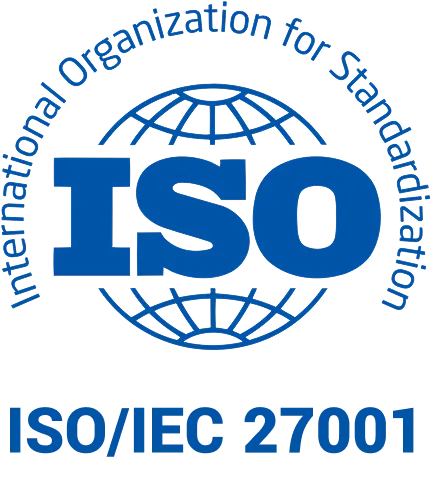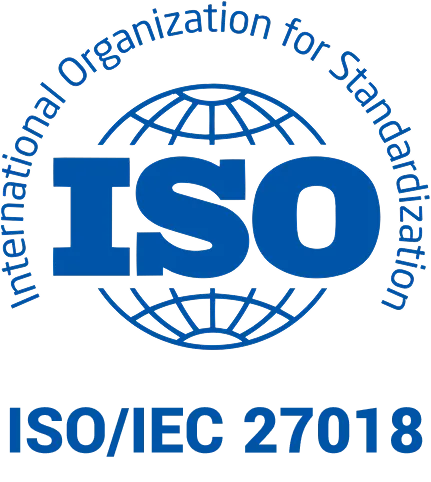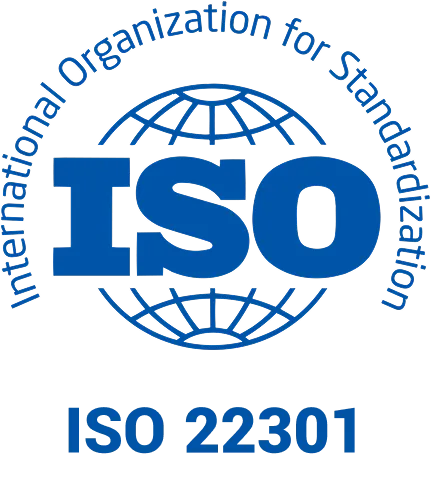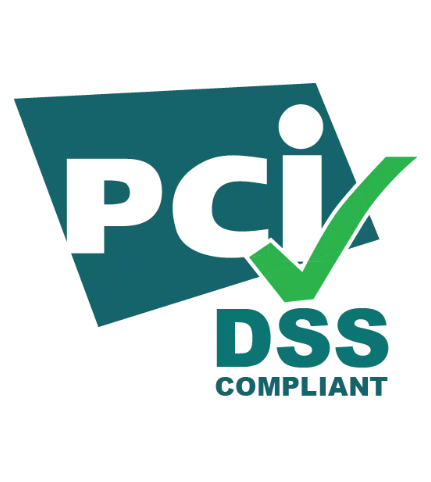
Gift Vouchers for Employees: Rules, Taxes, and Benefits
Gift vouchers are one of the most popular non-wage benefits used by Polish employers, especially during the holiday season. In 2025, the rules for granting and settling them are subject to detailed tax and social security regulations. Understanding these rules allows companies to effectively motivate their teams while optimizing costs.
What Are Employee Gift Vouchers?
The Role of Vouchers as a Non-Wage Benefit
Gift vouchers represent a non-monetary form of compensation, allowing employees to exchange a specific value for goods or services at selected locations. Unlike financial bonuses, whose motivational effect often fades after just a few weeks, vouchers build more lasting engagement and a sense of appreciation. Research from 2025 indicates that about 42% of employees are willing to lower their salary expectations in exchange for a more attractive benefits package, and 73% of respondents emphasize that additional non-wage benefits influence their decision to stay with the company.
Common Forms: Gift Cards and E-vouchers
Modern vouchers primarily come in the form of gift cards—plastic magnetic stripe cards with a coded value—and e-vouchers, which are electronic coupons sent via email or available in apps. Gift cards are durable, can be used multiple times, and can be reloaded after the balance is depleted, whereas paper vouchers are typically single-use. Tax authorities do not classify either form as "benefits in kind" (świadczenia rzeczowe), which has significant tax consequences. A modern alternative to traditional vouchers is virtual prepaid cards, which operate on the Mastercard system and eliminate logistics and plastic production costs.
Goals and Benefits of Using Vouchers in a Company
Employee Motivation and Loyalty
Subtle non-wage benefits, including vouchers, have a significant impact on motivation. Around 59% of employees state that such benefits greatly influence their motivation, and 73% agree that benefits increase their engagement at work. Companies investing in non-wage forms of motivation report 41% lower employee turnover. Shopping vouchers are among the most popular tangible benefits used in Polish enterprises.
Improving the Workplace Atmosphere
Giving gift vouchers builds positive relationships between the employer and employees and strengthens a culture of appreciation within the organization. Tax authorities confirm the position that purchasing gift cards as a way to strengthen bonds with employees is acceptable and has an indirect impact on performance levels and more effective work. This practice helps build a positive employer brand image as a company that cares for its people.
Personalization of Benefits and Their Effectiveness
Today's job market requires benefits to be tailored to the diverse needs of different generations of employees. Generation Z values flexibility and development opportunities, Millennials prioritize work-life balance, and employees aged 50+ prefer stability and social security. Personalizing benefits by offering vouchers for various categories of shops and services allows for a more effective response to the team's individual preferences. Solutions like Nais virtual prepaid cards offer maximum flexibility—employers can create ZFŚS (Social Fund), lunch, sports, cultural, or gift cards, and employees manage them via a mobile app with full control over their balance and transaction history.
Occasions for Giving Vouchers to Employees
Holidays, Anniversaries, and Other Company Events
The most popular time for giving vouchers is during holidays—especially Christmas and Easter. December, due to Christmas, is when many employers decide to give gifts to their employees and their children. Other occasions include employee anniversaries, the end of the fiscal year, achieving business goals, or team-building events.
Holiday Vouchers as the Most Popular Form
Holiday vouchers are the most widespread form of this benefit in Poland. Entrepreneurs are increasingly using various forms of gifting for their employees, mainly during the holiday season, and vouchers or gift cards are the most popular method. Their popularity stems from the wide range of redemption options and the flexibility employees have in using the allocated budget.
Types of Vouchers and Gift Cards
Single-Purpose (BJP) and Multi-Purpose (BRP) Vouchers
Since 2019, vouchers have been divided into two categories. Single-Purpose Vouchers (SPV, Bon Jednego Przeznaczenia - BJP) are those where the place of supply and the VAT amount on the supply are known at the time the voucher is issued—for example, a 100 PLN voucher for a car repair at a specific garage. Multi-Purpose Vouchers (MPV, Bon Różnego Przeznaczenia - BRP) are all others, e.g., vouchers issued by shopping malls that allow purchases in various stores within them. For SPVs, the VAT obligation arises at the time the voucher is transferred, whereas for MPVs, it arises only at the moment of redemption.
Shopping, Sports, Cultural, Service, and Grocery Vouchers
The market offers various categories of vouchers tailored to employee needs. Shopping vouchers allow for purchases in retail chains; sports vouchers provide access to sports equipment and apparel; cultural vouchers cover event tickets or access to cultural institutions; service vouchers apply to spas or car repair shops; and grocery vouchers can be exchanged in supermarkets. Each category meets different employee needs and preferences.
Popular Solutions: From Retail Cards to Virtual Payment Cards
Various voucher solutions operate on the Polish market. Traditional gift cards to chains like Allegro, Decathlon, Rossmann, Media Markt, or Kaufland are very popular due to the easy accessibility of redemption points. Modern mobile solutions are also gaining traction. The Nais virtual payment card is a benefit on the Mastercard system that eliminates logistics and plastic costs, works globally in physical stores, online, and abroad, and allows for full personalization—from ZFŚS cards to lunch, gift, or company-branded cards. Such a virtual card offers employees easy management via a mobile app and the option of unlimited top-ups.
Funding Gift Vouchers
Company Social Benefits Fund (ZFŚS)
Employers with at least 20 full-time equivalent (FTE) employees are required to create a Company Social Benefits Fund (ZFŚS, Zakładowy Fundusz Świadczeń Socjalnych). In 2025, the basis for calculating the ZFŚS write-off is the average monthly remuneration in the national economy, which is 7,262.39 PLN, making the basic write-off per employee 2,723.40 PLN. The employer must transfer the due funds to the fund's account by May 31, 2025 (at least 75% of the write-off equivalent) and by September 30, 2025 (the remaining amount).
Company's Current Funds (Operating Funds)
Gift vouchers can also be financed directly from the employer's operating funds, which is particularly relevant for companies not obliged to create a ZFŚS. In this case, the vouchers constitute employee income from the employment relationship and are subject to both income tax and ZUS (social security) contributions. The value of the voucher is added to the gross salary amount subject to social security and health insurance contributions.
Tax and Social Security Implications
Personal Income Tax (PIT)
Gift vouchers, regardless of their funding source, are not considered "benefits in kind" (świadczenia rzeczowe) by tax authorities. Therefore, they do not qualify for the full exemption provided for material gifts. The tax exemption specified in Art. 21(1)(67) of the Personal Income Tax Act, which applies only to benefits in kind fully financed by the ZFŚS, does not apply to gift vouchers. Vouchers, coupons, and other tokens exchangeable for goods or services do not belong to this group.
ZUS Contributions for Vouchers Financed from Operating Funds
If an employer purchases vouchers from the company's current funds, they are obliged to add them to the employee's remuneration, tax them, and pay ZUS contributions on them, just like regular salary. The value of a voucher, e.g., 500 PLN net, constitutes employee income from the employment relationship and is added to the gross salary amount subject to ZUS contributions. However, gift cards financed from the ZFŚS are not subject to ZUS contributions, provided the fund's regulations are followed.
PIT Exemption Limit and Its Application
In 2025, the annual personal income tax exemption limit for monetary and non-monetary benefits financed entirely from the ZFŚS is 1,000 PLN per employee. This limit was reduced from 2,000 PLN, which was temporarily in effect during the COVID-19 pandemic. Gift vouchers financed from the ZFŚS can benefit from this exemption up to 1,000 PLN, provided the process of allocating funds complies with the internal ZFŚS regulations. If the 1,000 PLN amount is exceeded, the surplus is subject to taxation at a rate of 12% or 32%, depending on the employee's tax bracket.
Vouchers as a Tax-Deductible Expense
Conditions for Including Vouchers as a Company Cost
Gift vouchers can be treated as a tax-deductible expense (koszt uzyskania przychodu) for the business, but only under certain conditions. For expenses on voucher purchases to be recognized as tax-deductible, they must be incurred to generate revenue or secure a source of revenue. These expenses should be marketing-related and tied to building relationships with contractors or employees. It is important that vouchers are not treated as representation expenses, as those are excluded from tax-deductible costs.
Required Tax Documentation
The purchase of vouchers must be documented with appropriate invoices or receipts that contain all required data. When funding gift cards from the ZFŚS, the cost is the value of the write-off made in accordance with ZFŚS regulations, provided the cash equivalent of these write-offs has been paid into the fund's bank account. It is crucial to have complete documentation and to skillfully prepare a description of the facts, especially when applying for an individual tax ruling.
Gifting Vouchers as a Donation
Differences in Taxation and Consequences for the Employer
In a situation where giving a voucher does not involve any reciprocal service from the employee and does not arise from the employer's obligations under existing regulations, the receipt of gift vouchers by employees is subject to the Act on Inheritance and Donation Tax, not Personal Income Tax (PIT). In this case, the tax obligation rests with the recipient (the employee). The tax-free amount for unrelated persons (classified in the third tax group) is 5,733 PLN over a 5-year period. If the value of the gifted vouchers does not exceed this tax-free amount, the recipient is not required to file an SD-3 declaration, and no tax liability arises.
Practical Aspects of Implementing Vouchers in a Company
How to Choose the Right Type of Voucher for Your Team
Choosing the right type of voucher requires analyzing the profile of the employees, their needs, and preferences. To determine which options should be included in the company's offer, you can conduct a survey or direct interviews with employees. The diversity of the team must be considered—younger employees might prefer sports or cultural vouchers, while those with families may appreciate shopping or grocery vouchers.
Personalizing Vouchers According to Employee Needs
Personalization of benefits has become a standard in modern HR, allowing for better alignment of benefits with individual expectations. Today's job market is multi-generational, so different age groups have different preferences. Regular surveys on employee benefit preferences work well, as do programs that allow employees to choose from several voucher categories. Systems based on virtual prepaid cards for employees offer maximum flexibility—employers can create ZFŚS, lunch, sports, cultural, or gift cards, and employees manage them via a mobile app with full control over their balance and transaction history.
Examples of Popular Solutions: Traditional Cards and Modern Mobile Benefits
The most popular options on the Polish market are gift cards to chains like Allegro (universal online shopping), Decathlon (sports goods), Rossmann (drugstore and cosmetics), Media Markt (electronics), or Kaufland (groceries). However, more and more companies are opting for modern mobile solutions. The Nais virtual Mastercard card eliminates the logistical costs associated with plastic cards, allows for easy management via a mobile app, and offers complete freedom in choosing where to shop, both in Poland and abroad. The choice of provider should consider the breadth of redemption options, convenience for employees, and the terms of cooperation for the employer.
Tax Rulings and Current Regulations
The Importance of Individual Tax Rulings
Due to the complexity of the regulations concerning the taxation of gift vouchers, many companies decide to apply for an individual tax ruling. Tax authorities confirm the position that purchasing gift cards as a way to strengthen bonds with employees is acceptable and has a motivational effect with an indirect impact on performance. Individual rulings protect the taxpayer from the consequences of incorrect settlements, making them particularly important when dealing with larger voucher values.
The Most Common Questions and Doubts from Employers
Employers most often have doubts about qualifying vouchers as tax-deductible expenses, the rules for social security contributions, and the distinction between an employment-related benefit and a donation. ZUS (the Social Insurance Institution) often questions the justification for not paying contributions on vouchers, arguing that the granted benefits do not meet the criteria for a social benefit, thus making contributions mandatory. Strict adherence to the ZFŚS regulations is also essential to avoid problems with control authorities.
FAQ
Are gift vouchers for employees tax-exempt?
Gift vouchers financed from the ZFŚS (Company Social Benefits Fund) are exempt from income tax only up to 1,000 PLN per employee per year in 2025. Above this limit, the surplus is subject to taxation at a 12% or 32% rate. Vouchers are not considered "benefits in kind," so they do not qualify for the full exemption provided for material gifts. If financed from the company's operating funds, vouchers are fully taxed and subject to ZUS contributions.
How do I account for a gift voucher given to an employee?
The settlement depends on the funding source and whether the voucher's value is treated as gross or net. For a gross voucher (e.g., 250 PLN) from the ZFŚS, the tax must be deducted from the employee's salary: 250 PLN x 12% = 30 PLN. For a net voucher, the value must first be grossed up: 250 PLN / (1 - 0.12) = 284.09 PLN, and then the tax is calculated: 284.09 PLN - 250.00 PLN = 34 PLN to be paid. Treating the voucher value as a gross amount is the more common option.
Can vouchers be a tax-deductible expense for the company?
Yes, gift vouchers can be a tax-deductible expense, provided they are incurred to generate revenue or secure a source of revenue. These expenses should be related to building employee relationships and be properly documented. They cannot be treated as representation expenses, which are excluded from costs. Tax authorities confirm the motivational effect of vouchers as an acceptable cost with an indirect impact on performance.
What are the differences between SPV (BJP) and MPV (BRP)?
Single-Purpose Vouchers (SPV / BJP) are those where the place of supply and the VAT amount are known at the time of issue, e.g., a voucher for a specific service at a specific location. Multi-Purpose Vouchers (MPV / BRP) are all others, where the VAT rate is not known at the time of issue. The key difference is the VAT trigger: for SPVs, it's at the time of transfer; for MPVs, it's at the time of redemption.
Are vouchers financed from the ZFŚS subject to ZUS contributions?
No, gift cards financed from the ZFŚS are not subject to ZUS (social security) contributions, provided the fund's regulations are followed. This position is consistent with social benefit regulations. However, vouchers financed from the company's operating funds are subject to ZUS contributions in the same way as regular salary. ZUS may challenge the exemption if it finds irregularities in how benefits are awarded.
Summary: When and Why to Use Gift Vouchers
Key Advantages for the Employer and Employee
Gift vouchers are an effective motivational tool that builds more lasting engagement than financial bonuses—73% of employees agree that benefits increase their work engagement. For the employer, the main advantage is the possibility of tax optimization when financing from the ZFŚS, where the exemption limit is 1,000 PLN per employee annually. Additionally, vouchers can be a tax-deductible expense, further reducing the company's fiscal burden. For employees, the key benefits are the flexibility in using the vouchers and the personalization of benefits that meet their individual needs.
Best Practices for Implementing Non-Wage Benefits
Effective implementation of a voucher system requires several steps. First, conduct a survey of employee preferences to select the appropriate voucher categories. Second, ensure compliance with ZFŚS regulations and proper documentation to avoid problems with control authorities. Third, careful budget planning is essential—in 2025, the basic ZFŚS write-off is 2,723.40 PLN per employee. Modern mobile solutions, like the Nais virtual card, eliminate logistical costs, fully digitize benefit management, and offer unlimited top-ups with personalization tailored to the company's needs. Finally, clearly communicate the rules for granting vouchers and their tax value to avoid misunderstandings with employees.





































